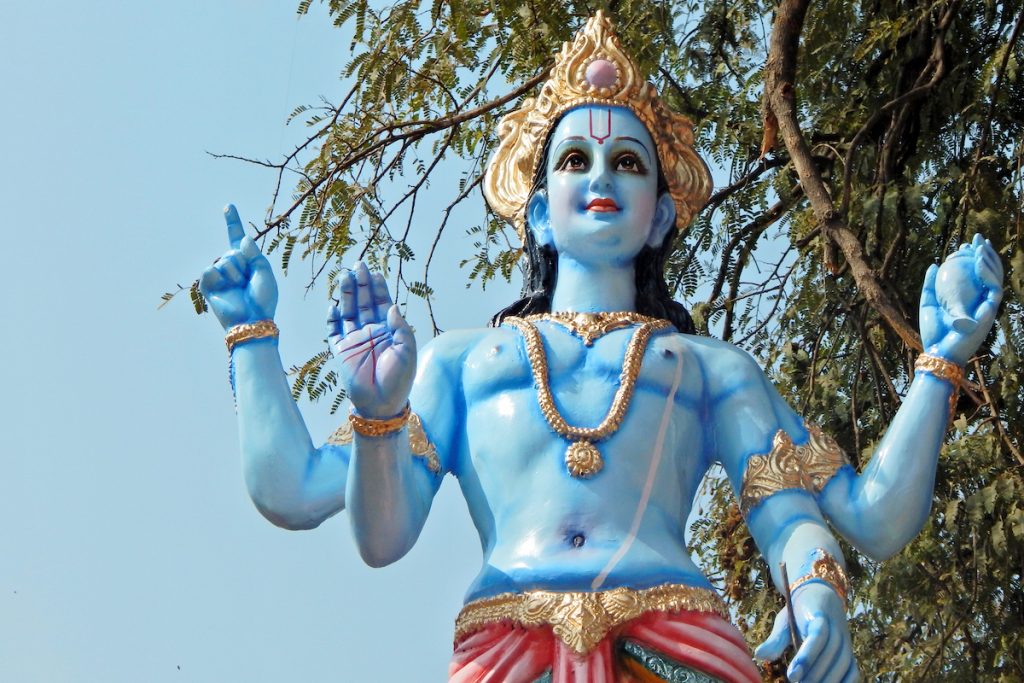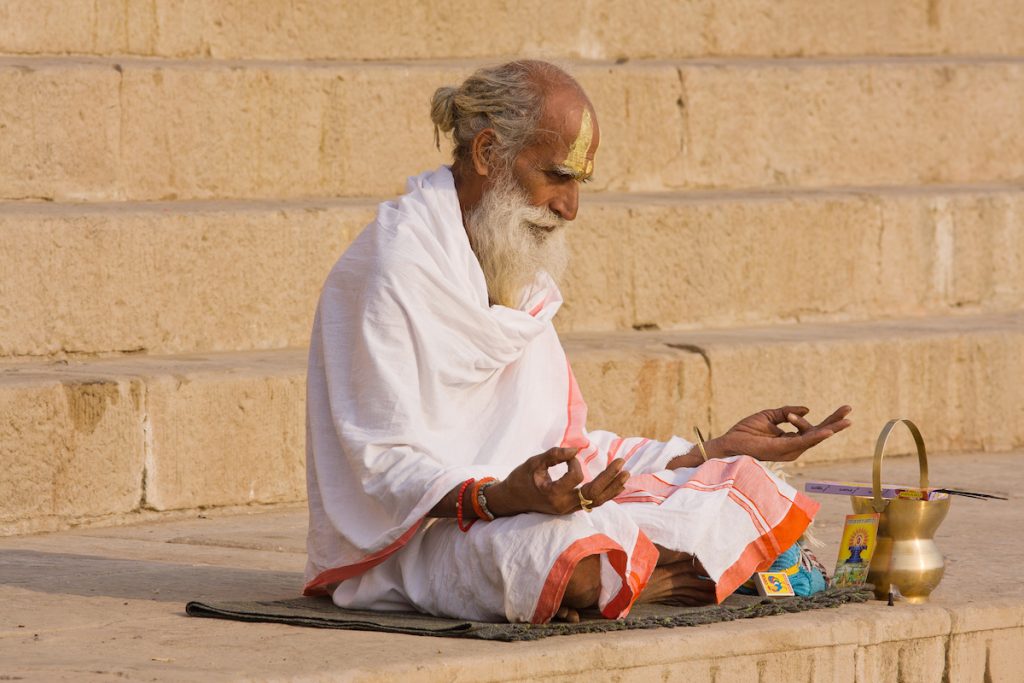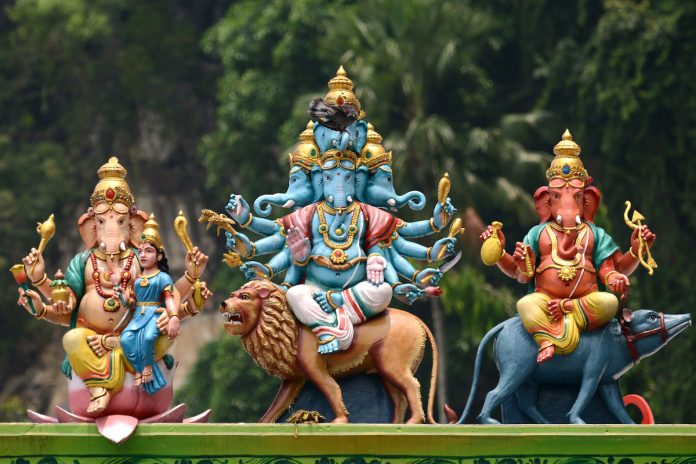The Catholic Bishops’ Conference of the Philippines has declared 2020 a year in which the importance of inter-religious dialogue, ecumenism, and respect for the cultures of indigenous peoples should be highlighted.
This essay series aims to help fulfill that need for interfaith understanding and dialogue. In today’s edition, we take a look at Hinduism.
Hinduism is a religion-philosophy predominant in India, which traces its roots to a myriad and even conflicting religious practices of an Indo-Aryan civilization focused on spiritual discipline.
These practices were later recorded in the Upanishads, a collection of approximately one hundred written works which promises a path of spiritual masterhood to priests and laymen alike.
The important concepts in the Upanishads, which are foundational to Hinduism, give us a glimpse into its cosmology and theological suppositions, which its understanding of the human condition, social realities, and ethical situations.
Here are some of those concepts.
- Brahman is the divine reality and the spirit of the universe. This divine reality manifests itself in all things. Hinduism is thus a form of pantheistic monism, in that every creation is an expression of the divine. All things are thus “holy,” animated by a single sacred source of energy. It may be said that not only is reality coming from Brahman, but that reality, in its deepest essence, is actually Brahman itself. Coming to a level of consciousness that recognizes Brahman and the interconnectedness of creation, is the primary aim of Hindu spirituality. In short, divineness can be known and experienced, rather than simply believed in.
- Atman is understood to be the individual’s deepest self, which, if experienced fully, is identical to Brahman. It may also be understood as the divine reality in oneself.
- Maya is the perceived reality in its many diverse and separate forms, which in essence is Brahman. This reality changes and transforms, whose eschatological implications are that human life is its own vital force, which goes from one form to another, giving rise to the belief in reincarnation.
- Karma is the concept of the direction of one’s rebirth to a higher or lower form of life, which is primarily affected by the decisions one makes in their present life-form. Karma, therefore, has moral and ethical implications, because doing good or evil determines this direction.
- Samsara is the concept of the cycle of constant rebirth, a cycle which one seeks to be liberated from (moksha).
- Moksha is the ultimate goal of Hindu life — to be liberated from samsara. Moksha is aimed at attaining a more selfless perspective on life, by recognizing the unity and sacredness of everything. Kindness to all of creation is the natural result of this insight; when insight and kindness are perfect, there is liberation from samsara and the pain of rebirth ends, individuality disappears, and only Brahman remains.
The popular notion about Hinduism is that it is polytheistic, but there is an underlying tendency that their pantheon of gods is considered a multitude of expressions of the single divine reality.
Hindus usually focus their devotion on one god, which they often consider as a favored manifestation of the one Brahman.
These god manifestations therefore come in different forms, and some appear or disappear from devotion depending on popularity.
One of the most popular and important manifestations is the Trimurti or a trinity of gods representing the forces of creation, Brahma; preservation, Vishnu; and destruction, Shiva.
The gods, in turn, have their own individual incarnations. For example, Vishnu has two very popular incarnations, Rama and Krishna.

Concerning destruction, Shiva is to be understood in the context of the Hindu concept of transforming reality, in which destruction is necessary for rebirth, or what we may call “re-creation.”
The Bhagavad Gita is part of an epic poem called the Mahabharata, whose role in the later evolution of Hinduism is the balance it strikes between mysticism and action in everyday life.
The Bhagavad Gita also reinforces the caste system, which holds that there are different types of people with different ways to spiritual perfection, depending on social roles — one attains higher forms in rebirth (thus, higher castes) or perfection by doing one’s duty proper to one’s caste.
Ironically, the system that ideally recognizes the diversity of paths towards moksha, and thus equal opportunity for spiritual liberation, has become the system for social-structural bondage.
The castes (brahmin, kshatriya, vaishya, shudra, and dalit ) are real social classes that dissuade interaction of one class with another.
Aside from being expected to conform to one’s caste, each individual is also expected to live in a particular way corresponding to his or her current stage of life, and that this way of living changes as one progresses from one stage to the next (brachmacharin, grihastha, vanaprastha, and sannyasin).
Though Hinduism’s goal is moksha, it also recognizes worldly goals, that if deemed to be virtuous, may be pursued with moderation and social regulation. These are kama (pleasure), artha (security and power), and dharma (social and religious duty).
Yogas are active spiritual methods available to Hindus, as options to the passive contemplation endorsed by the Bhagavad Gita. These methods can be used to help people live spiritually, depending on their caste, life-stage, personality, and occupation.

The available yogas are jnana (the way of study), karma (the way of working without desire for reward), bhakti (the way of devotion), raja (the way of meditation), hatha (the way of exercise).
Hinduism is also known for its recognition of the female aspects of divinity and its devotion to animals, a result of their metaphysical worldview of cosmic interconnectedness. This is very much unlike non-Hindu thought that is usually male-dominated, patriarchal, or human-centered.
The underlying motive for ethical behavior is clearly the concept of karma and the overriding desire to attain moksha.
Hinduism, in spite of its confusing diversity in beliefs, deities, and devotional practices, and without a framework of what it believes in, (which for other philosophies is the foundation for ethical behavior), manages to elicit such behavior, simply because it is resilient and has been engrained for generations.
Hindus have long embraced this fear of eschatological consequences. Likewise, it has been influenced by parallel concepts which have found their own unique expression in cultures Hinduism has come into contact with, including our own Filipino culture.
Brother Jess Matias is a professed brother of the Secular Franciscan Order. He serves as minister of the St. Pio of Pietrelcina Fraternity at St. Francis of Assisi Parish in Mandaluyong City, coordinator of the Padre Pio Prayer Groups of the Capuchins in the Philippines, and prison counselor and catechist for the Bureau of Jail Management and Penology.
The views expressed in this article are the opinions of the author and do not necessarily reflect the editorial stance of LiCAS.news.









